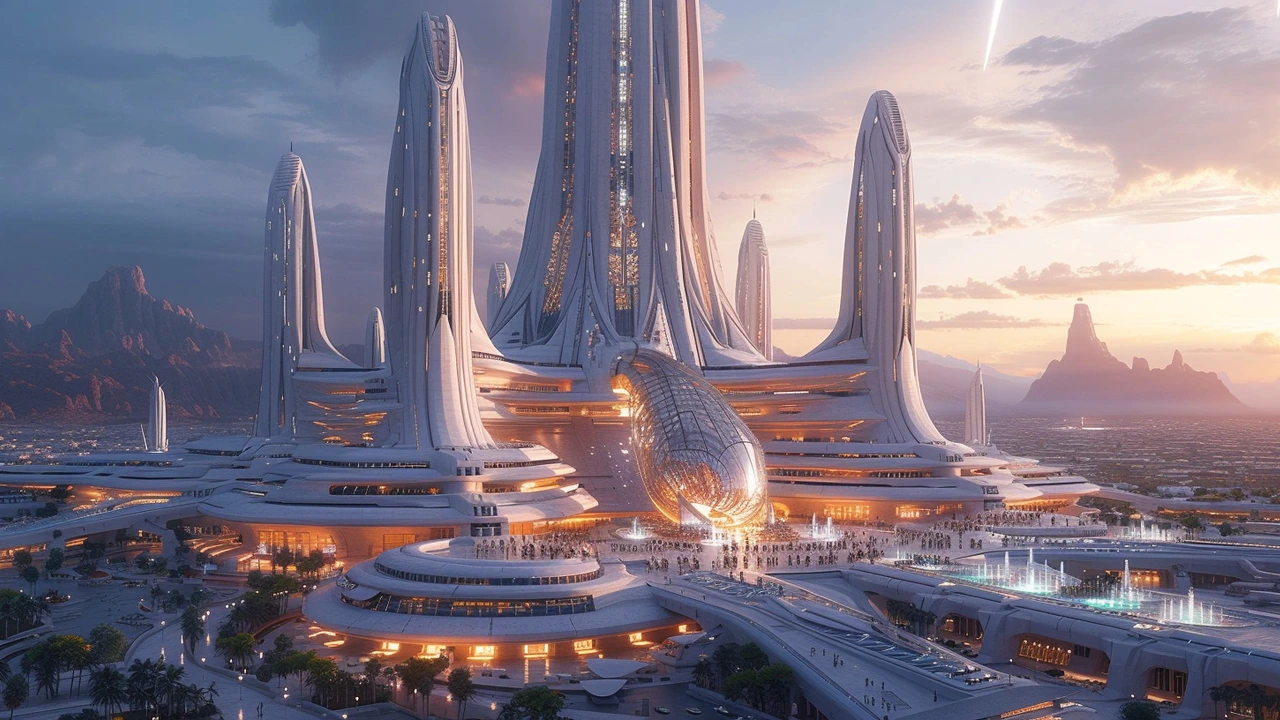This article delves into the intriguing world of Constructivist Architecture, a movement not just defined by its innovative designs but also as a mirror reflecting societal changes. It explores the origins of this architectural style, its characteristics, its impact on modern architecture, and how it continues to influence today's society. By examining its role in echoing societal evolution and presenting various examples, this read offers a comprehensive understanding of Constructivist Architecture's significance in both historical and contemporary contexts.
Architectural Evolution: Read Buildings Like a Timeline
Buildings are history you can touch. From Roman arches and concrete to neo-futurist glass towers, each style solves a problem and tells a story. If you learn a few visual clues, you’ll start noticing why some streets feel formal, why some neighborhoods feel warm, and why certain civic buildings still look important. This page collects clear, practical ideas to help you spot styles, understand their purpose, and use them in everyday design.
How to Spot Key Styles
Want to identify a style fast? Look for one strong clue at a time. For ancient Roman work, check for rounded arches, vaults, and heavy stone or concrete mass. Greek Revival screams columns, pediments, and symmetry—think temples turned into homes. Baroque shows drama: curved facades, heavy ornament, and theatrical staircases. Beaux-Arts buildings pair classical details with grand public scale—wide stairs, decorative sculptures, and axial layouts that shape boulevards.
Move forward in time and the clues change: Bauhaus and International Style favor clean lines, flat roofs, and function-first layouts. Constructivist and Expressionist buildings bend form for politics or emotion—unexpected angles and bold silhouettes. High-tech architecture uses exposed steel, visible systems, and lots of glass. Neo-futurism brings flowing shapes and tech-driven structures that look like they came from tomorrow.
Use Historic Ideas Today
You don’t need to copy an old building to borrow its strengths. Want proportion and calm? Use classical symmetry and simple column motifs in a new facade. Need light and openness? Pull from mid-century modern and Bauhaus—open plans, large windows, and minimal trims. Trying to make a public building feel civic and grand? Use Beaux-Arts ideas: clear axis, a strong entrance, and a defined plaza or stair approach.
Practical tip: mix one clear historic element with modern materials. Example: keep a Greek-style portico but build it in steel and glass for a fresh look. For homes, small nods—arched window heads, tile roofs from Mediterranean Revival, or Craftsman exposed beams—add character without overwhelming a modern layout.
Preservation matters, but it doesn’t mean freezing a building in time. Repair original features where possible; document changes; and when adding modern systems, hide them carefully so the old craftsmanship still reads. For city planners, study how Beaux-Arts boulevards organized movement, or how Roman public baths centered community life—those spatial ideas still guide good public design.
Want to explore specific styles? Check articles on Roman techniques, Renaissance balance, Beaux-Arts city shaping, Constructivist boldness, and neo-futurist visions. Each piece shows clear features, historical context, and quick ways to use those ideas today. Start looking at your neighborhood with fresh eyes—you’ll be surprised how many design lessons are hiding in plain sight.
As a male blogger highly invested in historical and architectural studies, I've always been in awe of the Renaissance era. The role architecture played during that period is simply fascinating and undeniably pivotal. In the article, we'll delve into how Renaissance architecture shaped the course of history and influenced the future of design. We'll explore the magnificent forms, the innovative techniques, and the enduring inspiration derived from that era. It's truly amazing how much our world has been sculpted by these architectural masterpieces.
As a passionate history and architecture enthusiast, I'm thrilled to introduce you to the engaging world of Ancient Roman architecture and its evolution. From the early structures to the sophisticated, intricate designs we see in the later periods, every step tells a story of influence, innovation, and insight. With this article, let's unfold the beauty of Roman architectural progression, understanding how society, politics, and cultural shifts shaped their iconic constructions. Join me as we journey through time, rediscovering our past through the lenses of Roman brick and stone.
Hi there, fellow architectural enthusiasts! In this post, we're diving into the fascinating world of postmodern architecture. We will break down the norms of traditional architecture and explore how postmodern designs defy the usual boundaries. Expect to find a vibrant showcase of innovative concepts and an evolution of architectural designs through this post. Tune in for an exciting and insightful journey, and let's redefine architecture together!




